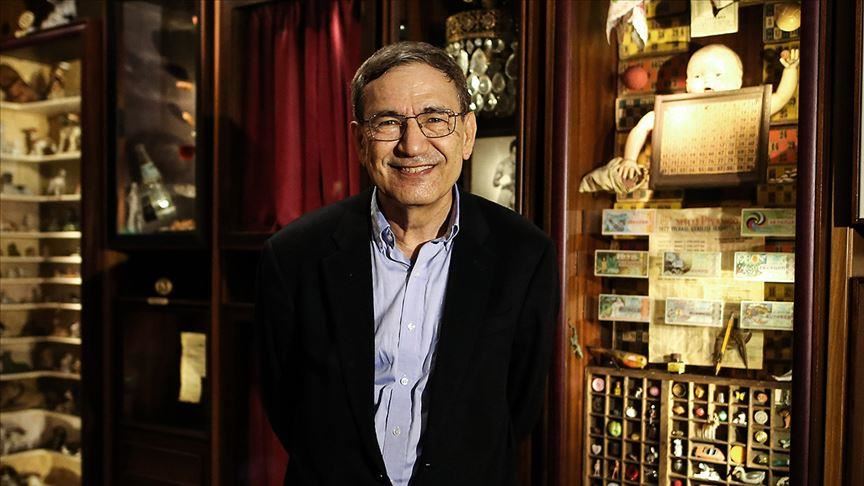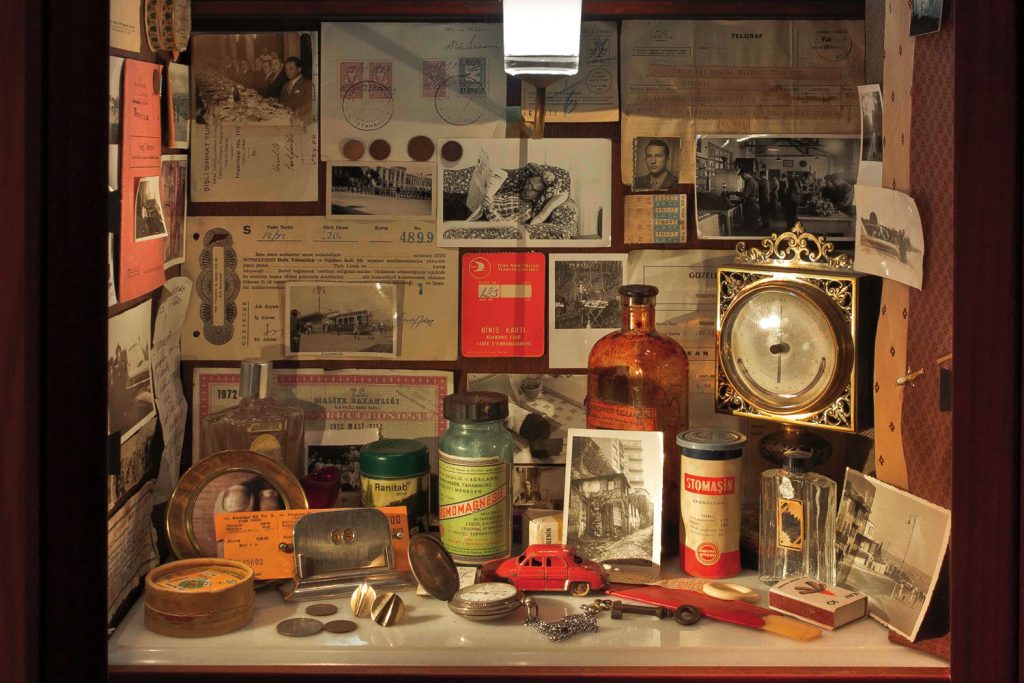Introduction
Orhan Pamuk, the acclaimed Turkish author, is renowned for his ability to weave intricate tales that capture the essence of Istanbul and the human condition. One of his most remarkable works, “The Museum of Innocence,” transcends the realm of literature to become a tangible art form, as Pamuk ingeniously transforms words into objects, creating a museum that celebrates love, memory, and the intricacies of existence. In this 1500-word exploration, we delve into the world of “The Museum of Innocence,” examining how the novel seamlessly melds narrative and art, and its profound impact on the cultural landscape.

Historical and Cultural Context
To truly appreciate the significance of “The Museum of Innocence,” one must first delve into its historical and cultural context. Set in Istanbul in the 1970s, the novel offers a glimpse into the city’s societal dynamics and political climate during that period. Istanbul itself becomes a central character in the story, with Pamuk’s vivid descriptions evoking the city’s multifaceted beauty and charm. The setting serves as a backdrop against which the intricate love story unfolds, with the city’s rich history and culture shaping the characters’ lives and decisions.

Character Analysis
At the heart of the novel are two compelling characters: Kemal Basmaci and Fusun Keskin. Kemal, the protagonist, embarks on a journey of obsession and unrequited love, driven by his infatuation with Fusun, a distant relative. Kemal’s character evolves throughout the story, making him a relatable and multi-dimensional figure as he navigates the complexities of love and longing.
Fusun Keskin, the object of Kemal’s affection, is equally fascinating. Her character is intricately woven into the narrative, revealing layers of vulnerability, strength, and resilience. Fusun’s choices and actions challenge conventional gender roles, making her a compelling and unconventional female lead.
Supporting characters, such as family and friends, play pivotal roles in shaping Kemal and Fusun’s journey. They provide insight into the societal pressures and expectations that influence the characters’ choices and actions, adding depth to the story.
Themes Explored
“The Museum of Innocence” delves into several profound themes, each contributing to the novel’s rich context. Love and obsession are central to the narrative, with Kemal’s unrelenting infatuation driving the plot forward. Pamuk masterfully portrays the destructive power of obsession, offering a thought-provoking commentary on the lengths to which individuals will go in the name of love.
Memory and nostalgia are intricately interwoven throughout the novel. The Museum of Innocence itself serves as a powerful symbol of memory, with each object representing a moment frozen in time. The story explores the role of objects in triggering memories and the significance of preserving moments of happiness and sorrow.
Identity and social class also feature prominently in the narrative. Kemal’s identity crisis and the social hierarchies in Istanbul provide insight into the characters’ struggles for authenticity in a rapidly changing world. Pamuk skillfuly addresses the complexities of navigating societal expectations while staying true to oneself.

Narrative Structure and Style
Orhan Pamuk employs a first-person narrative style in “The Museum of Innocence,” allowing readers to intimately connect with Kemal’s inner thoughts and emotions. Flashbacks are seamlessly woven into the narrative, enhancing the storytelling by providing insights into the characters’ pasts and motivations.
Pamuk’s use of literary devices and symbolism adds depth to the narrative. Objects take on a symbolic significance, representing the characters’ emotions and experiences. The novel’s intricate structure mirrors the complex web of emotions and relationships at its core, making it a literary masterpiece.
The Museum as a Metaphor
The concept of the museum is central to the novel’s narrative. It serves as a metaphor for Kemal’s obsession and his desire to preserve moments of innocence. Each object in the museum represents a fragment of the characters’ lives, meticulously collected and curated. The museum becomes a physical manifestation of Kemal’s love and longing, blurring the lines between reality and fiction.
The Novelist as Collector
Orhan Pamuk’s connection to the story goes beyond that of a traditional author. He becomes a collector himself, transforming his literary creation into a real-world museum. The Museum of Innocence in Istanbul, founded by Pamuk, houses the very objects described in the novel. This blurring of fiction and reality elevates the novel to a new level of artistic expression, inviting readers to engage with the story in a tangible way.

The Museum’s Cultural Impact
In “The Museum of Innocence” lies the transformation of literature into a tangible art form. Orhan Pamuk’s decision to create a real-world Museum of Innocence in Istanbul, meticulously curated with objects that mirror those described in the novel, marks a groundbreaking fusion of literature and visual art. The museum invites visitors to step into the world of Kemal and Fusun, blurring the lines between fiction and reality.
This unique concept has garnered international attention, drawing visitors from around the world to experience the novel in a multi-sensory way. The Museum of Innocence offers a profound opportunity to engage with literature on a deeply personal level, as visitors can touch, see, and even smell the objects associated with the characters and their stories.
Orhan Pamuk as Collector
Orhan Pamuk’s role in bringing “The Museum of Innocence” to life goes beyond that of a traditional author. He becomes a collector, preserving the emotions and memories of his characters through physical objects. In this act of collecting, Pamuk mirrors Kemal’s obsession, further blurring the lines between author and character.
The Museum of Innocence is a statement to Pamuk’s dedication to his craft and his commitment to preserving the essence of Istanbul’s culture and history. It is not only a physical space but also an advocate to the power of literature to inspire art and vice versa. Pamuk’s unique approach to storytelling has elevated him to the status of a literary and artistic visionary.
Critical Reception and Interpretations
“The Museum of Innocence” has received widespread critical acclaim, earning a place among the most celebrated works of contemporary literature. Critics have lauded Pamuk’s ability to explore complex themes such as love, memory, and identity with depth and nuance.
Scholars have delved into the novel’s rich symbolism and narrative structure, uncovering layers of meaning that continue to captivate readers and provoke discussion. Pamuk’s use of objects as symbols of memory and emotion has been a subject of particular fascination, highlighting the novel’s ability to transcend traditional storytelling.
Readers have embraced “The Museum of Innocence” for its exploration of universal themes and its ability to evoke a wide range of emotions. Some find solace in its portrayal of unrequited love, while others appreciate its commentary on the passage of time and the preservation of memories. The novel’s enduring relevance lies in its ability to resonate with readers on a deeply personal level.
Conclusion
Orhan Pamuk’s “The Museum of Innocence” is a literary masterpiece that defies categorisation, seamlessly blending storytelling with artistry. Its profound impact on the cultural landscape is evident through the creation of a real-world museum that allows visitors to immerse themselves in the world of the novel. Orhan Pamuk’s role as a collector adds an additional layer of complexity to the narrative, blurring the lines between fiction and reality.
The critical reception and interpretations of the novel underscore its enduring significance and the depth of its themes. “The Museum of Innocence” continues to attract readers and scholars alike, inviting them to explore the intricacies of love, memory, and identity through the lens of a nostaligic narrative.
In a world where literature and art intersect in unique and innovative ways, “The Museum of Innocence” stands as an appreciation of of storytelling and the boundless possibilities of human creativity. Orhan Pamuk’s creation is a reminder that literature can transcend its written form, becoming a living, breathing work of art that resonates with audiences across the globe.
Feature Image: The Museum of Innocence, Istanbul: a look inside | Courtesy: International Traveller

Contributor






